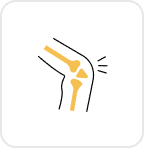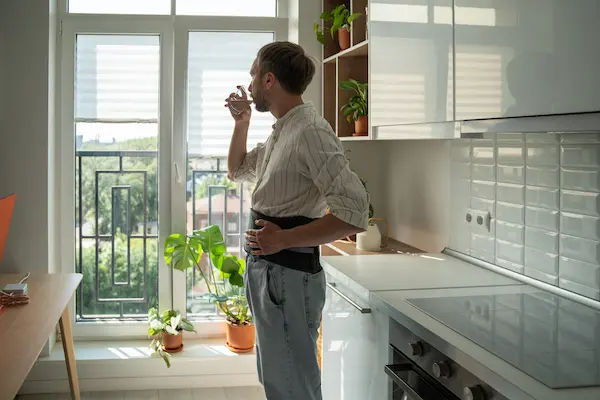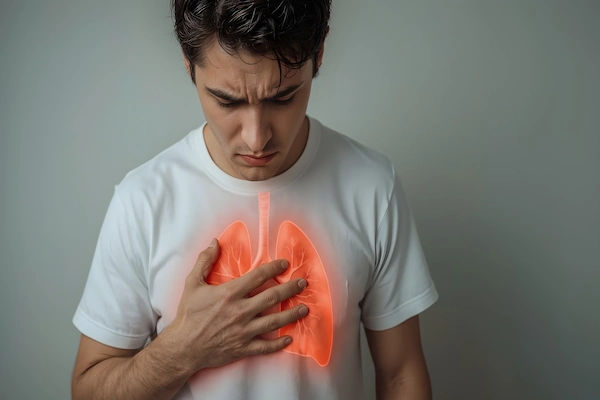Breathe Easier: Your Guide to Pulmonary Rehabilitation
Breathe easier with our comprehensive guide to pulmonary rehabilitation. Learn about its benefits, core components, and how it can help improve your lung health and quality of life.

Written by Dr. Dhankecha Mayank Dineshbhai
Reviewed by Dr. Md Yusuf Shareef MBBS
Last updated on 29th Sep, 2025

Introduction
Living with a chronic lung condition like COPD, pulmonary fibrosis, or severe asthma can feel like every breath is a struggle. Simple activities—climbing stairs, walking to the mailbox, or even getting dressed—can become daunting tasks, leading to frustration and a diminished quality of life. If this sounds familiar, you are not alone, and there is a proven path to reclaiming your vitality: pulmonary rehabilitation. This specialised program is much more than just exercise; it's a comprehensive, supervised approach designed to help you manage your condition, improve your physical strength, and breathe easier. Think of it as a personalised training course for your lungs and the rest of your body. This guide will walk you through everything you need to know about pulmonary rehabilitation, from its life-changing benefits and core components to what you can expect when you begin your journey. Our goal is to empower you with the knowledge to take the next step toward a more active and fulfilling life.
What is Pulmonary Rehabilitation?
Pulmonary rehabilitation (PR) is a medically supervised program for people with chronic respiratory diseases. It's tailored to the individual's needs and combines exercise training, health education, and breathing techniques to improve their overall physical and psychological condition.
The Core Goal: More Than Just Exercise
While supervised exercise is a cornerstone, the ultimate goal of a pulmonary rehab program is to help you achieve the highest possible level of independence and quality of life. It’s about equipping you with the tools and confidence to manage your symptoms effectively every day. The program doesn't cure the underlying lung disease, but it can dramatically reduce its impact, helping you break the cycle of breathlessness, inactivity, and deconditioning that often accompanies chronic lung conditions.
Who is a Candidate for a Pulmonary Rehab Program?
PR is highly beneficial for individuals with a range of chronic respiratory conditions. If your daily life is affected by persistent shortness of breath, you may be a candidate. Common conditions include:
- Chronic obstructive pulmonary disease (COPD)
- Pulmonary fibrosis
- Cystic fibrosis
- Bronchiectasis
- Severe asthma
- Before and after lung surgery or a lung transplant.
A doctor's referral is typically required to enroll. If you experience significant shortness of breath that limits your activities, consulting a doctor online with Apollo24|7 can be a great first step to discuss if a referral to pulmonary rehabilitation is right for you.
Consult a Pulmonologist for the best advice
The Multifaceted Benefits of Pulmonary Rehabilitation
The benefits of participating in a structured PR program are extensive and well-documented by research. Patients often report feeling better than they have in years.
Physical Benefits: Strengthening Your Body and Lungs
The most immediate benefits are often physical. Through targeted training, PR helps:
- Increase Exercise Tolerance: You’ll be able to do more with less breathlessness.
- Reduce Respiratory Symptoms: Techniques learned can help manage shortness of breath (dyspnoea) and coughing.
- Improve Muscle Strength and Endurance: This reduces the oxygen demand of daily tasks, making them easier.
- Decrease Hospitalisations: Studies show that PR can significantly reduce hospital readmissions for COPD exacerbations.
Psychological and Emotional Benefits: Reducing Anxiety and Depression
The impact of a chronic lung disease isn't just physical. The constant worry about breathing can lead to anxiety, social isolation, and depression. A key benefit of pulmonary rehab for COPD and other conditions is the psychological support. By building confidence in your ability to manage symptoms and connecting you with a supportive community of healthcare professionals and peers, PR can significantly lessen anxiety and improve your overall mental well-being.
What to Expect: The 4 Core Components of a PR Program
A standard pulmonary rehabilitation program is built on four essential pillars, delivered by a multidisciplinary team including doctors, respiratory therapists, physiotherapists, and dietitians.
1. Supervised Exercise Training
This is the most active part of the program. Sessions are carefully monitored, and your oxygen levels and heart rate are tracked to ensure safety. The following components make up the supervised exercise training program:
- Endurance Training: This usually involves walking on a treadmill or using a stationary bike to improve cardiovascular fitness.
- Strength Training: Light weightlifting or resistance band exercises strengthen your arm and leg muscles, making daily chores less taxing.
- Breathing Techniques: You will learn essential skills like pursed-lip breathing and diaphragmatic breathing, which help control shortness of breath and improve the efficiency of each breath.
2. Disease-Specific Education
Knowledge is power. Educational sessions help you understand your condition, how your medications work, and how to recognise early signs of an exacerbation (flare-up), allowing for earlier intervention.
3. Nutritional Counseling
Maintaining a healthy weight is crucial. Being underweight can weaken respiratory muscles, while being overweight can make breathing more difficult. A dietitian can provide personalised advice to meet your nutritional needs.
4. Psychological and Emotional Support
Many programs offer counseling or support groups to address the feelings of anxiety, depression, and stress that can accompany a chronic illness, providing strategies for coping and improving mental health.
Your Pulmonary Rehabilitation Journey: From Start to Finish
Understanding the process can help alleviate any anxiety about starting a new program.
The Initial Assessment: Creating Your Personalised Plan
Your journey begins with a thorough evaluation. The team will assess your lung function (possibly through spirometry), your exercise capacity, and your overall health status. Apollo24|7 offers a convenient home collection for tests like vitamin D or HbA1c that might be part of this initial workup, providing a complete picture of your health to create a plan tailored just for you.
The Ongoing Sessions: Commitment is Key
Programs typically run for 6-12 weeks, with sessions 2-3 times per week. Consistency is vital for achieving the best results. The team will gradually increase the intensity of your workouts as your fitness improves.
Life After Rehab: Maintaining Your Progress
A good program will provide you with a maintenance plan. This includes strategies for continuing pulmonary rehabilitation exercises at home and staying active in your community to ensure the benefits last long after the formal program ends.
Get Your Health Assessed
Conclusion: Taking the Next Step Towards Better Breathing
Pulmonary rehabilitation offers a powerful, evidence-based solution for taking control of your life despite a chronic lung condition. It empowers you with the knowledge, skills, and confidence to manage your symptoms, reduce hospital visits, and engage more fully in the activities you love. While the journey requires commitment, the reward—a life with easier breathing and greater independence—is immeasurable. If you or a loved one is struggling with a respiratory disease, the most important step is to start the conversation. Talk to your pulmonologist or primary care physician about whether pulmonary rehabilitation is the right choice for you. Taking that first step could be the beginning of a new, more active chapter in your life.
Consult a Pulmonologist for the best advice
Consult a Pulmonologist for the best advice

Dr. P Sravani
Pulmonology Respiratory Medicine Specialist
3 Years • MBBS, MD
Visakhapatnam
Apollo Clinic Vizag, Visakhapatnam

Dr Rakesh Bilagi
Pulmonology Respiratory Medicine Specialist
10 Years • MBBS MD PULMONOLOGIST
Bengaluru
Apollo Clinic, JP nagar, Bengaluru

Dr. K Prasanna Kumar Reddy
Pulmonology Respiratory Medicine Specialist
16 Years • MBBS, DTCD (TB&CHEST), DNB (PULM MED), FCCP
Hyderabad
Apollo Medical Centre Kondapur, Hyderabad
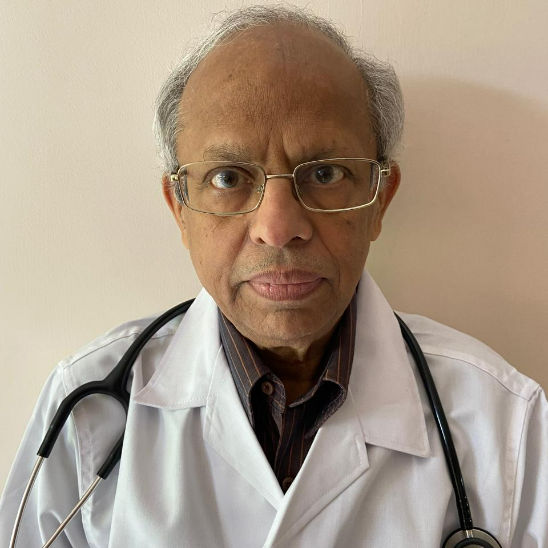
Dr. E Prabhakar Sastry
General Physician/ Internal Medicine Specialist
40 Years • MD(Internal Medicine)
Manikonda Jagir
Apollo Clinic, Manikonda, Manikonda Jagir
(150+ Patients)
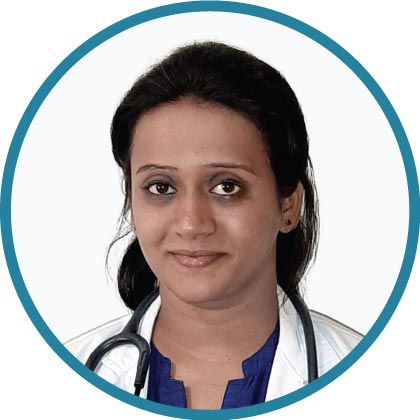
Dr. Gomathi R G
Respiratory Medicine/ Covid Consult
7 Years • MBBS, MD (TB & Pul. Med.)
Chennai
Apollo First Med Hospitals P H Road, Chennai
Consult a Pulmonologist for the best advice

Dr. P Sravani
Pulmonology Respiratory Medicine Specialist
3 Years • MBBS, MD
Visakhapatnam
Apollo Clinic Vizag, Visakhapatnam

Dr Rakesh Bilagi
Pulmonology Respiratory Medicine Specialist
10 Years • MBBS MD PULMONOLOGIST
Bengaluru
Apollo Clinic, JP nagar, Bengaluru

Dr. K Prasanna Kumar Reddy
Pulmonology Respiratory Medicine Specialist
16 Years • MBBS, DTCD (TB&CHEST), DNB (PULM MED), FCCP
Hyderabad
Apollo Medical Centre Kondapur, Hyderabad

Dr. E Prabhakar Sastry
General Physician/ Internal Medicine Specialist
40 Years • MD(Internal Medicine)
Manikonda Jagir
Apollo Clinic, Manikonda, Manikonda Jagir
(150+ Patients)

Dr. Gomathi R G
Respiratory Medicine/ Covid Consult
7 Years • MBBS, MD (TB & Pul. Med.)
Chennai
Apollo First Med Hospitals P H Road, Chennai
More articles from Rehabilitation
Frequently Asked Questions
Is pulmonary rehab covered by insurance?
In many countries, including India, major insurance providers do cover pulmonary rehabilitation for conditions like COPD, especially if it's medically necessary. It's best to check with your specific insurance provider and your hospital's administrative staff for details on your policy's coverage.
Can I do pulmonary rehab at home?
While the initial, supervised program is crucial for safety and effectiveness, many of the principles and exercises can be continued at home after you've been properly trained. Some programs are also developing telehealth options. The key is to first learn the correct techniques under professional guidance.
How long does a typical pulmonary rehabilitation program last?
Most standard programs run for 6 to 12 weeks, with sessions held two to three times per week. The duration can be adjusted based on your individual progress and needs.
I use oxygen. Can I still participate in pulmonary rehab?
Absolutely. In fact, pulmonary rehabilitation is highly recommended for oxygen therapy patients. The team will carefully monitor your oxygen saturation during exercise and adjust your oxygen flow rate as needed to keep you safe and comfortable.
What is the difference between pulmonary rehab and general physical therapy?
While both involve exercise, pulmonary rehabilitation is highly specialised for lung diseases. It includes a full team of respiratory experts, focuses specifically on breathing techniques and managing respiratory symptoms, and incorporates disease-specific education that general physical therapy does not.

